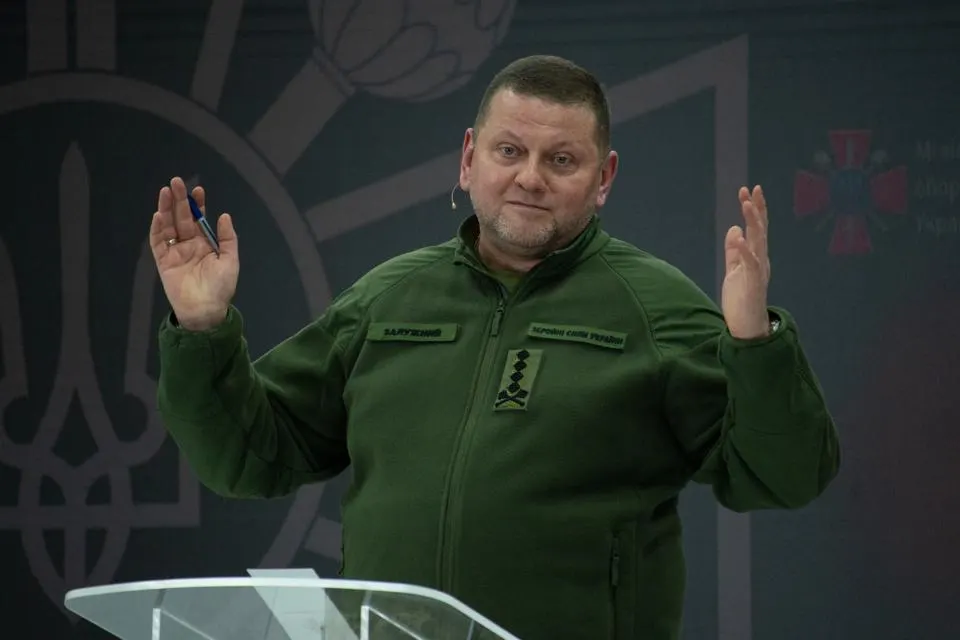The line between satire and disinformation continues to blur on social media, where the context of a post made in jest can be misunderstood to be a factual news report. When the source of the original “faux news” is a Russian Telegram channel, the line blurs even further.
That was the case this past weekend when social media claims were made that among the houses destroyed in the tragic Los Angeles fires were homes belonging to at least eight Ukrainian military general officers.
On Saturday, the Russian Telegram channel Military Observer first posted, “According to Ukrainian sources, 8 mansions owned by high-ranking Ukrainian military personnel were burned during large-scale wildfires in Los Angeles. The total value of these properties amounts to $90 million and was allegedly purchased with funds provided by the West as part of economic aid to Kyiv after the war began.
Subsequent posts named Valerii Zaluzhnyi, former Ukrainian four-star general and current ambassador of Ukraine to the United Kingdom, as being among those who have lost their homes.
Satire, But Really Disinformation
The initial post on Telegram did indeed include the hashtag “сатира” (Russian for satire), but subsequent reposts lacked any mention that it was made in jest. That was true as the story began to circulate on Facebook and X. Yet, even as “satire,” it isn’t clear where the humor lies in the original post, except possibly to Russian audiences who might find joy that any Ukrainian would see their home burns down in the devastating California fires.
“There is zero evidence that any Ukrainian generals own any property in L.A., much less mansions,” said Dr. Matthew Schmidt, professor of national security and political science at the University of New Haven.
Humor likely wasn’t even the point, and instead, the channels posting the claims likely wanted it to be believed as fact – much like the news last summer that Ukrainian President Volodymyr Zelensky spent $15 million to buy a Mercedes 770 automobile that was previously owned by Nazi dictator Adolf Hitler, or that Zelensky’s wife purchased a Bugatti sports car. Neither was true, of course, but both times, it appeared some users believed the stories.
“Russian intelligence floods the info space with this stuff to play up their narrative that Ukraine is corrupt and the Russian war there just,” explained Schmidt. “It’s that simple.”
Social Media Has Become The Perfect Propaganda Tool
The ongoing war in Ukraine has proven that platforms like Telegram and X can help disinformation campaigns reach the masses in a way not previously possible.
“Social media is the match that lights fires. Its reach and speed for spreading misinformation are unlike any other media. It enables misinformation to spread like wildfire, usually causing harm to an adversary,” warned technology industry analyst Susan Schreiner of C4 Trends.
“Russian Telegram channels are at it again,” added Dan Brahmy, CEO of disinformation detection platform Cyabra. “The claim is absurd, but the real problem is how easily these stories spread across platforms. Messages like this don’t stay on Telegram – they jump to X, Facebook, and TikTok, where they evolve and reach even bigger audiences. On top of that, fake campaigns often repurpose unrelated content to fit their narrative, amplifying it even further. It’s not just about the misinformation – it’s about how quickly it crosses platforms and gains traction.”
Disinformation Fits An Existing Narrative
All of these disinformation campaigns have a common thread – they’re based on the unsubstantiated belief that Ukrainian officials are getting rich while the war continues. The Russian propaganda effort is thus to encourage support for the war at home while making those in the West question any aid that has been sent to Kyiv.
“People predisposed to believing narratives like this will take it to be another ‘false’ datapoint of corruption and largesse in the Ukrainian military, and at the same time, a sweet act of karma that these imaginary mansions are burning to the ground,” said Schmidt. “It’s also not unimportant that there is a religious aspect to this narrative – that a just God is smiting the evildoers with a very biblical plague of fire.”
The War Of The Words
Even as Russia has been unable to achieve victory on the ground, its keyboard warriors continue to carry water for the Kremlin, spreading the “news” of Ukraine’s perceived corruption.
According to Cyabra’s new “Truth Wars: How Three Global Powerhouses Compete to Manipulate Your Online Reality” report, Russia employs fake accounts across social media, where it has deployed hundreds of tightly synchronized, high-volume posts, which flood the platforms with vast amounts of identical, automated content.
The campaigns are also often carried out on U.S. weekends for maximum audience impact.
“The next war for democracy won’t be fought with tanks or missiles – it’s already being fought in our social media feeds,” said Brahmy. “State-sponsored disinformation isn’t just fake news. It’s a precision weapon designed to fracture societies, hijack public trust, and reshape global power dynamics. AI-driven narratives are 45% more likely to go viral than reality, meaning the same algorithms designed to connect us could ultimately divide us more than ever.”

